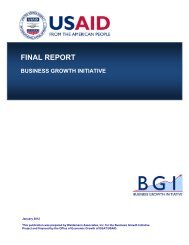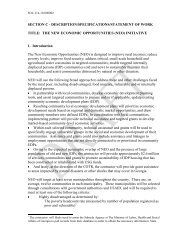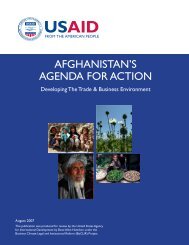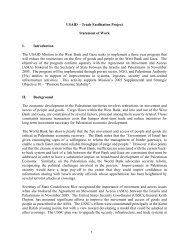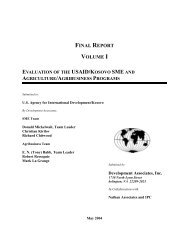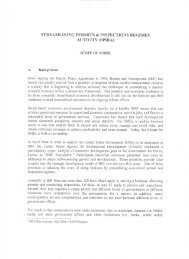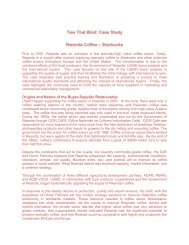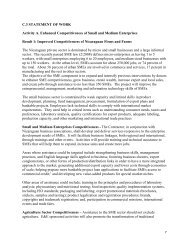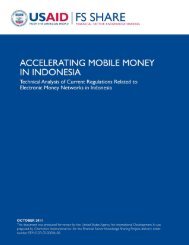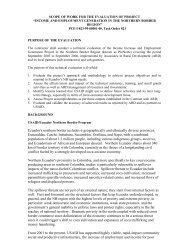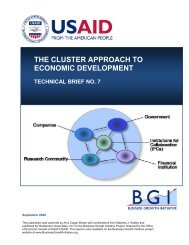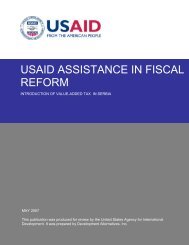USAID Fragile States Strategy - The Air University
USAID Fragile States Strategy - The Air University
USAID Fragile States Strategy - The Air University
- No tags were found...
You also want an ePaper? Increase the reach of your titles
YUMPU automatically turns print PDFs into web optimized ePapers that Google loves.
A New Vision for Strengthening<strong>Fragile</strong> <strong>States</strong>Definitions<strong>Fragile</strong> states have posed a growingproblem since the end ofthe Cold War, but they are nowrecognized as a source of our nation’smost pressing security threats. <strong>The</strong>re isperhaps no more urgent matter facing<strong>USAID</strong> than fragile states, yet no set ofproblems is more difficult and intractable.Twenty-first century realitiesdemonstrate that ignoring these statescan pose great risks and increase thelikelihood of terrorism taking root. Atleast a third of the world’s populationnow lives in areas that are unstable orfragile. This poses not only a nationalsecurity challenge but a development• <strong>USAID</strong> uses the term fragile states to refer generally to a broad range offailing, failed, and recovering states. However, the distinction among them isnot always clear in practice, as fragile states rarely travel a predictable path offailure and recovery, and the labels may mask substate and regional conditions(insurgencies, factions, etc.) that may be important factors in conflict andfragility. It is more important to understand how far and quickly a country ismoving from or toward stability than it is to categorize a state as failed or not.<strong>The</strong>refore, the strategy distinguishes between fragile states that are vulnerablefrom those that are already in crisis.• <strong>USAID</strong> is using vulnerable to refer to those states unable or unwilling toadequately assure the provision of security and basic services to significantportions of their populations and where the legitimacy of the government is inquestion. This includes states that are failing or recovering from crisis.• <strong>USAID</strong> is using crisis to refer to those states where the central governmentdoes not exert effective control over its own territory or is unable or unwillingto assure the provision of vital services to significant parts of its territory,where legitimacy of the government is weak or nonexistent, and where violentconflict is a reality or a great risk.and humanitarian challenge. As aresult, the overall level of assistance tofragile states has increased since theend of the Cold War so that in 2003,excluding Iraq, almost one-fifth of<strong>USAID</strong>’s overall resources were spentin such settings.Driven by several key factors, the imperativeto improve our response in fragilestates has taken on a new urgency:• First, the events of September 11,2001, profoundly demonstratedthe global reach of state failure andfocused attention on their drivers andproducts—weak governance, poverty,and violent conflict. <strong>USAID</strong>’s ForeignAid in the National Interest summarizedthis dynamic: “When developmentand governance fail in a country,the consequences engulf entireregions and leap around the world.”<strong>The</strong> September 11 events prompteda reassessment of the role of developmentwhich, along with diplomacyand defense, is now recognized as acore U.S. national security objective. 1• Second, the United <strong>States</strong> has aninterest in reducing poverty andadvancing development. <strong>Fragile</strong> statespose a special challenge because theyare frequently unable to achieve anyforward development momentumand can generate enormous human1 <strong>The</strong> National Security <strong>Strategy</strong> of the United <strong>States</strong>of America (<strong>The</strong> White House: Washington, D.C.,2002).FRAGILE STATES STRATEGY 1



